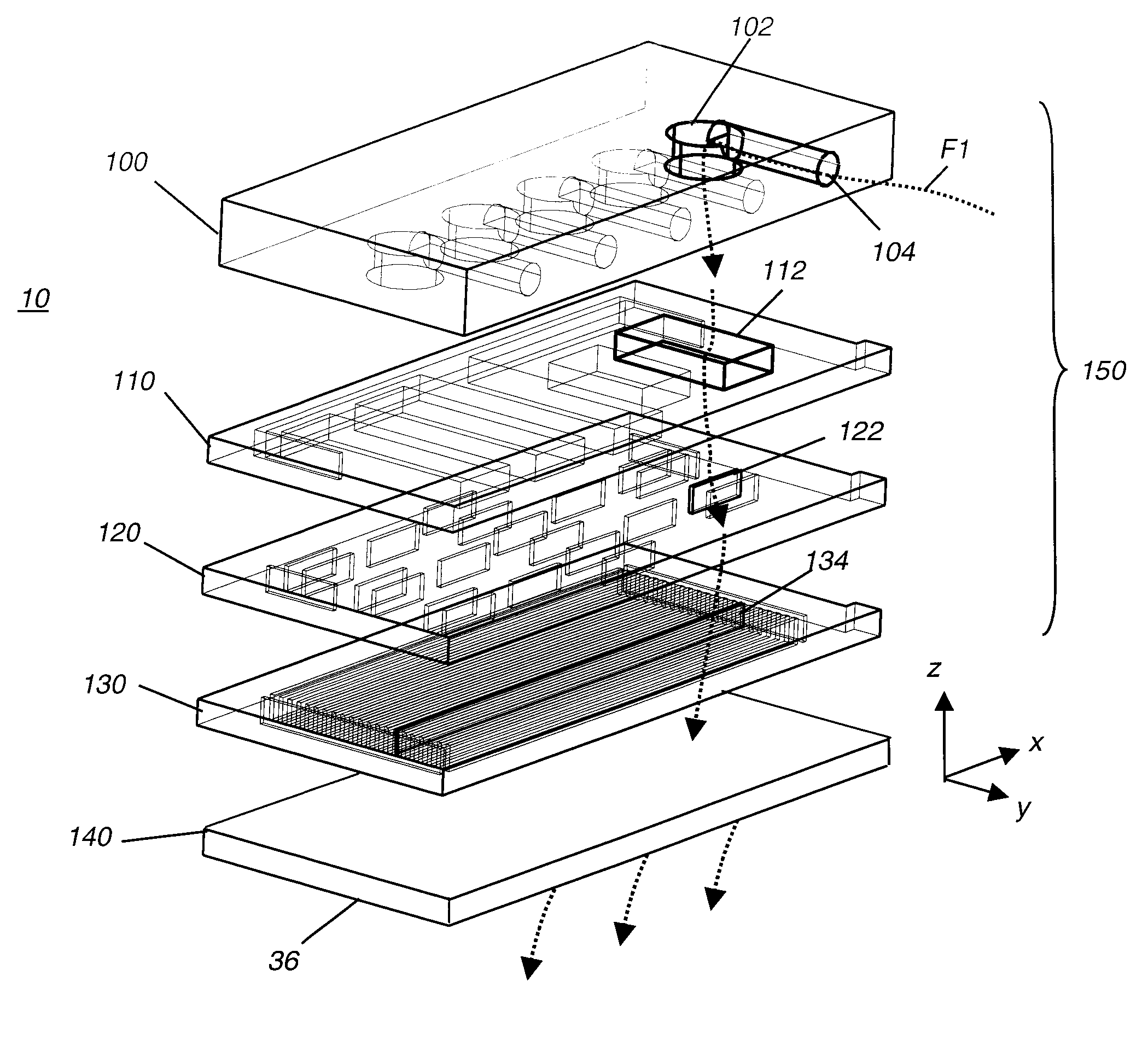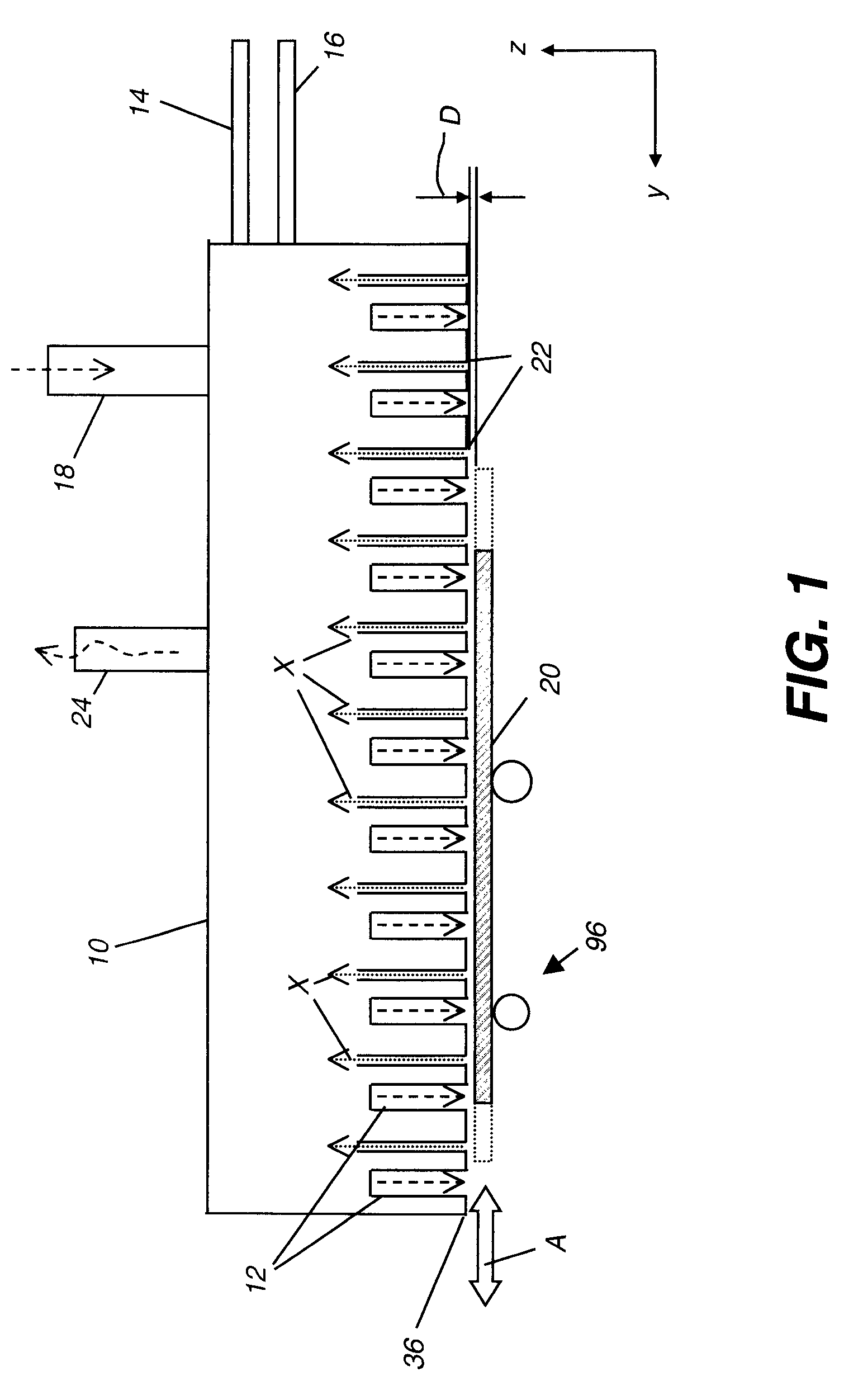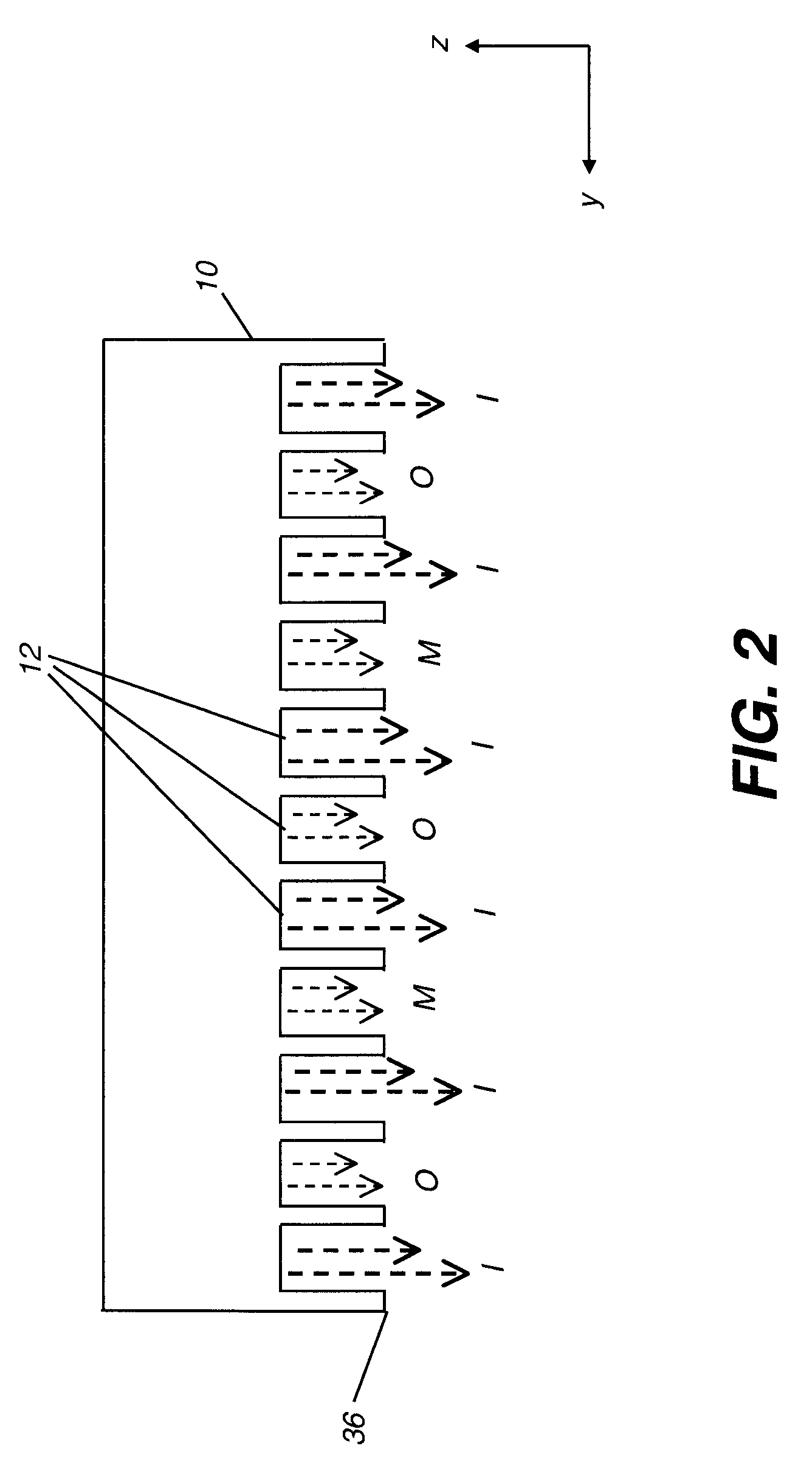Delivery device comprising gas diffuser for thin film deposition
a technology of diffuser and delivery device, which is applied in the direction of additive manufacturing apparatus, chemical vapor deposition coating, coating, etc., can solve the problems of difficult to avoid some direct reaction of different precursors, large amount of chemical vapor deposition reaction, and relatively insensitive to transport non-uniformities, so as to reduce the residence time
- Summary
- Abstract
- Description
- Claims
- Application Information
AI Technical Summary
Benefits of technology
Problems solved by technology
Method used
Image
Examples
example 1
[0212]A mechanical gas diffusing element according to the embodiment of FIG. 8D was constructed. In this element, the 130 micron thick nozzle plate contained 50 micron holes at a spacing of 1000 microns. The mixing chamber was composed of an additional 130 thick micron plate in which existed chamber openings of 460 microns. Finally, the gas was allowed to exit through and additional 130 thick micron plate in which were cut 100 micron exit slots.
[0213]The diffuser plate was mounted to a fixture to allow a flow to be presented to the nozzle arrangement. The cumulative area of flow for this setup, as defined by the area between exit slots, was 9.03×10−4 m2. A total volumetric flow of 5.46×10−5 m3 / s of nitrogen (density=1.14 kg / m3) was flowed through the device, leading to a gas velocity of 0.06 m / s. With this gas velocity, a pressure drop of 2760 Pa was measured across the diffuser. Pressure was measured with a commercially available digital pressure transducer / gauge (obtained from Ome...
example 2
[0223]Instead of the mechanical gas diffusing element of Example 1, a 0.2 micron pore porous alumina membrane can be used. A commercially available alumina porous membrane containing 0.2 micron pores was purchased from Whatman Incorporated. The active area of the membrane was 19 mm in diameter and was mounted in a pressure filter holder through which was passed nitrogen gas at room temperature. The cumulative area of flow for this setup, as defined by the area of the 19 mm diameter circle, was 2.83×10−4 m2. A total volumetric flow of 1.82×105 m3 / s of nitrogen (density=1.14 kg / m3) was flowed through the device, leading to a gas velocity of 0.06 m / s. With this gas velocity, a pressure drop of 22690 Pa was measured across the diffuser. The friction factor f was calculated to be 9.6×106.
example 3
[0224]Instead of the mechanical gas diffusing element of Example 1, a 0.02 micron pore porous alumina membrane can be used. A commercially available alumina porous membrane containing 0.02 micron pores was purchased from Whatman Incorporated. The active area of the membrane was 19 mm in diameter and was mounted in a pressure filter holder through which was passed gas at room temperature. The cumulative area of flow for this setup, as defined by the area of the 19 mm diameter circle, was 2.83×10−4 m2. A total volumetric flow of 1.82×105 m3 / s of nitrogen (density=1.14 kg / m3) was flowed through the device, leading to a gas velocity of 0.06 m / s. With this gas velocity, a pressure drop of 54830 Pa was measured across the plate. The friction factor f was calculated to be 2.3×107.
PUM
| Property | Measurement | Unit |
|---|---|---|
| velocity | aaaaa | aaaaa |
| velocity | aaaaa | aaaaa |
| angle | aaaaa | aaaaa |
Abstract
Description
Claims
Application Information
 Login to View More
Login to View More - R&D
- Intellectual Property
- Life Sciences
- Materials
- Tech Scout
- Unparalleled Data Quality
- Higher Quality Content
- 60% Fewer Hallucinations
Browse by: Latest US Patents, China's latest patents, Technical Efficacy Thesaurus, Application Domain, Technology Topic, Popular Technical Reports.
© 2025 PatSnap. All rights reserved.Legal|Privacy policy|Modern Slavery Act Transparency Statement|Sitemap|About US| Contact US: help@patsnap.com



